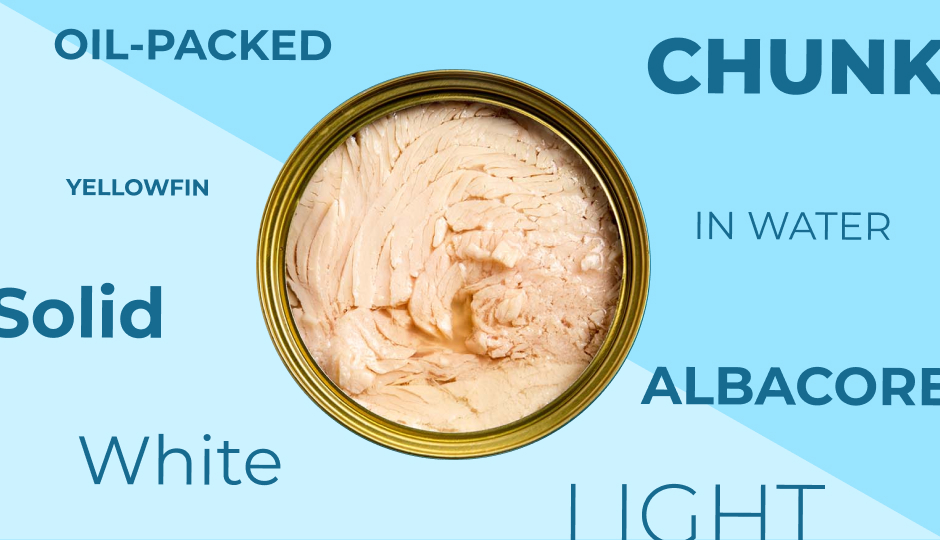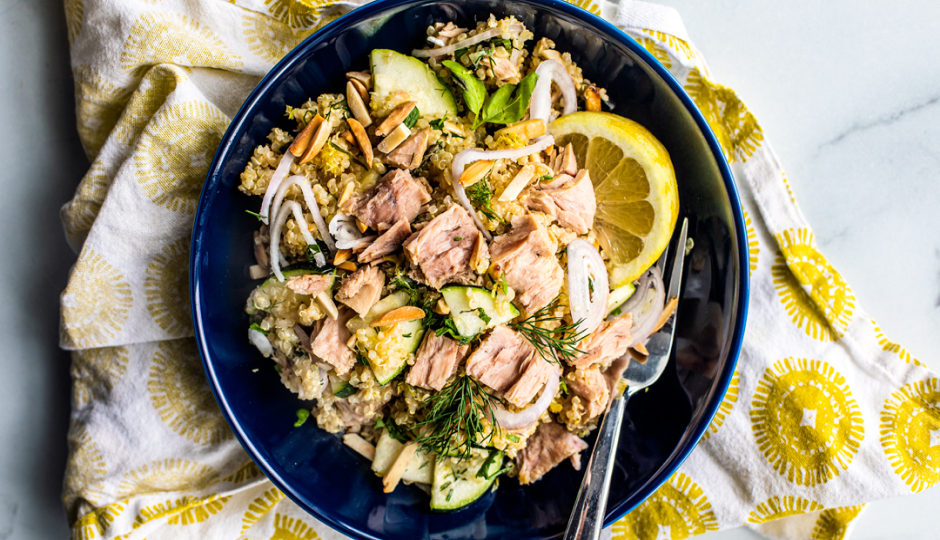Albacore vs Yellowfin
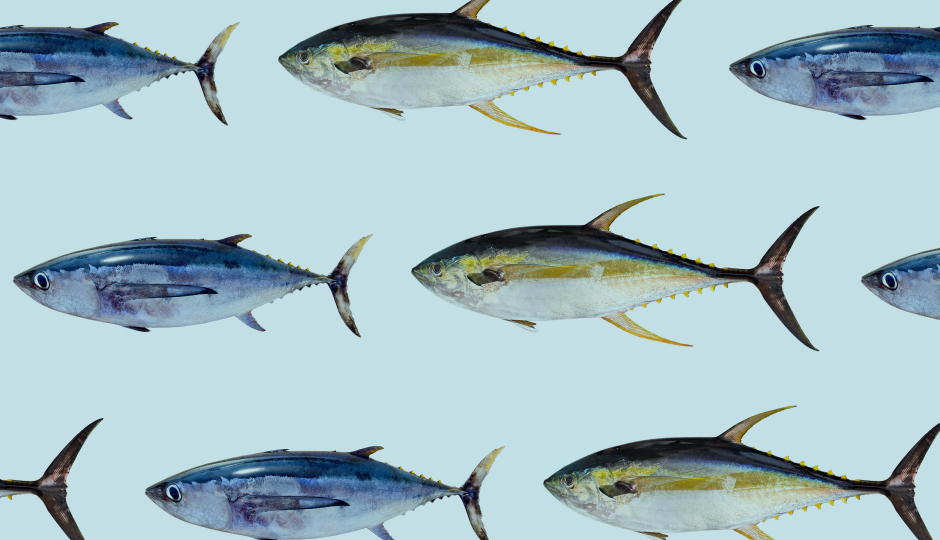
In this guide, we’ll dive deep into the world of tuna, comparing albacore vs yellowfin to help you make an informed decision based on your preferences, health considerations, and culinary needs.
When it comes to choosing tuna, the options can be overwhelming. Albacore and yellowfin are two popular varieties out of many types of tuna, each with its unique characteristics. Let’s start by describing each in more detail and then compare them side-by-side.
Albacore Tuna
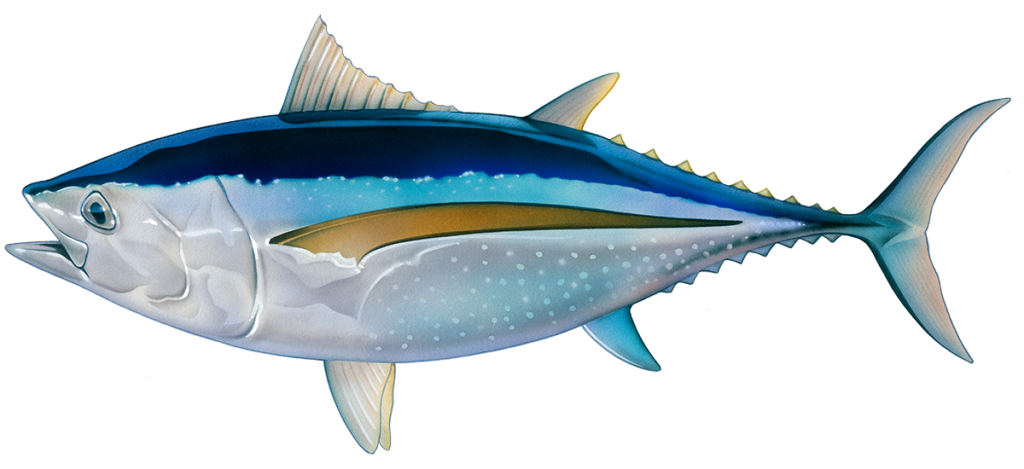
Albacore tuna have a sleek appearance and tend to be larger than some other varieties. They have a distinctively long pectoral fin, which is why they are sometimes called “Longfin” tuna. They have larger eyes than Yellowfin tuna and boast a dark blue upper side and a clear-cut silvery-white lower side. North Atlantic Albacore tuna can reach sizes of up to 4 feet in length and 88 lbs.
Albacore meat is lighter than other types of tuna so it’s sometimes referred to as the “solid white tuna.” It is a rich source of protein and features omega-3 fatty acids, making it a heart-healthy choice.
Known for mild flavor and tender texture, canned albacore shines in dishes where its delicate flavor and meaty, flaky texture can take center stage. From classic tuna salads to grilled steaks, albacore adapts well to various cooking methods.
Yellowfin Tuna: The Bold and Flavorful Catch
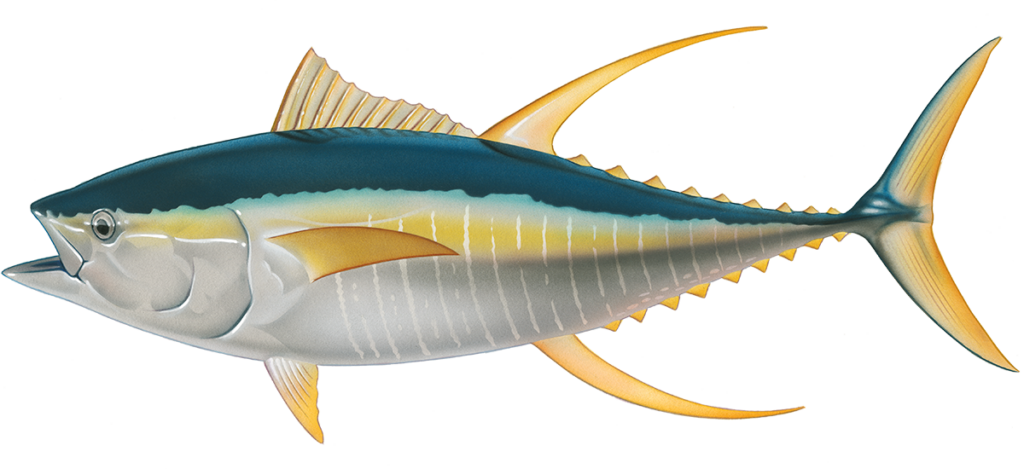
Yellowfin tuna, also referred to as ahi tuna, can be identified by their long, curved, and bright yellow second dorsal fin. They are among the biggest tuna species, reaching lengths of 6-7 feet and weights of up to 400 lbs.
Recognizable by its slightly darker meat, yellowfin is favored for its versatility in the kitchen. Like albacore, it provides a hearty dose of protein and omega-3 fatty acids, contributing to overall health.
Yellowfin tuna, with its robust flavor and firm texture, offers a different taste experience. So, in recipes where a stronger tuna flavor is desired, such as sushi, sashimi, seared tuna steaks, sandwiches or pasta dishes, yellowfin takes the spotlight. It’s often sometimes canned as “ light tuna”, but it doesn’t have as much of a strong, fishy taste as skipjack tuna. Its meaty texture makes it a popular choice for those who enjoy a more substantial mouthfeel.
Comparative Analysis: Albacore vs Yellowfin
Now, let’s compare albacore and yellowfin across key factors to help you decide which tuna variety aligns with your preferences and dietary needs.
| Albacore | Yellowfin | |
|---|---|---|
| Taste and Texture | Milder flavor and meaty texture makes it suitable for various dishes, from salads to casseroles. | Bold flavor and softer texture makes it ideal where a stronger tuna taste is desired, such as sandwiches or pasta dishes. |
| Habitat | Commonly found along the west coast of the US, from California and Oregon all the way up to Washington, as well as around the Bay of Biscay and the Mediterranean in Europe. | More widespread than albacore and are found in depths of 330 feet, but they have been recorded in waters as deep as 3,800 feet. Yellowfins are exceptionally abundant along the shores of the eastern Pacific Ocean, especially from San Diego to Puerto Vallarta. On the Atlantic side, you can find them roaming the waters from Nova Scotia down to North Carolina. Yellowfins are also abundant around mid-ocean islands. They are frequent visitors of places like the Bahamas, Bermuda, Hawaii, Catalina Island, as well as the Canaries and Azores |
| Responsible Sourcing | Both albacore and yellowfin can be responsibly sourced, depending on fishing practices and locations. Look for eco-friendly labels or choose tuna with certification from organizations promoting sustainable seafood. | |
| Cost | Albacore and yellowfin canned tuna are typically priced about the same. | |
In the albacore vs yellowfin tuna debate, there’s no one-size-fits-all answer. Both types of tuna offer unique attributes that cater to different tastes and preferences. Whether you opt for the mild elegance of albacore or the robust flavor of yellowfin, rest assured that each choice comes with its own set of nutritional benefits. Ultimately, the perfect species of tuna for you is the one that lines up with your recipe and health considerations.

